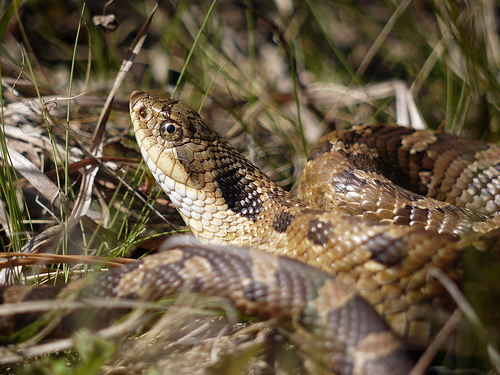Do the words “poison ivy” make you itch? Not all people are allergic to the oil that’s found throughout this plant, but for those who are and who come into contact with it, the result can be weeks of misery. As a kid I had a bad reaction to poison ivy when I crawled through the undergrowth looking for a lost baseball. Since then I’ve learned to avoid it, and these skills have served me well across many years of blissful, rash-free hikes. Here’s what to look for.
The Overall Shape
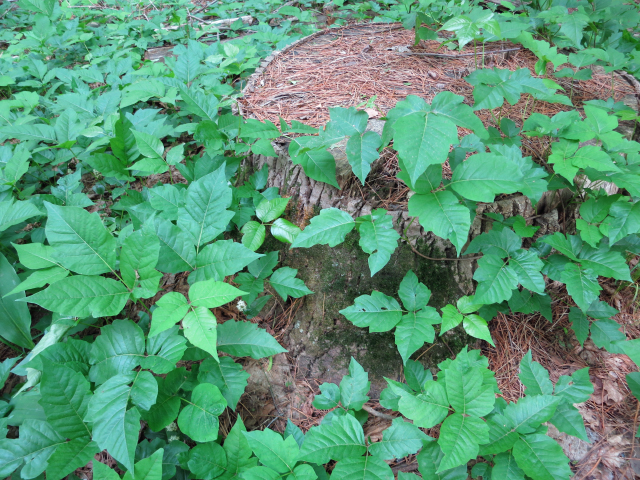
Poison ivy carpets the forest floor.
Poison ivy can take three possible growth forms:
- Sometimes it looks like a thick vine, and you’ll see it winding around a tree and climbing high into the air.
- Sometimes it looks a like a bush or a shrub.
- Other times it will carpet the ground.
As a result, you may see poison ivy at almost any height, from your toes to above your head.
The Leaves
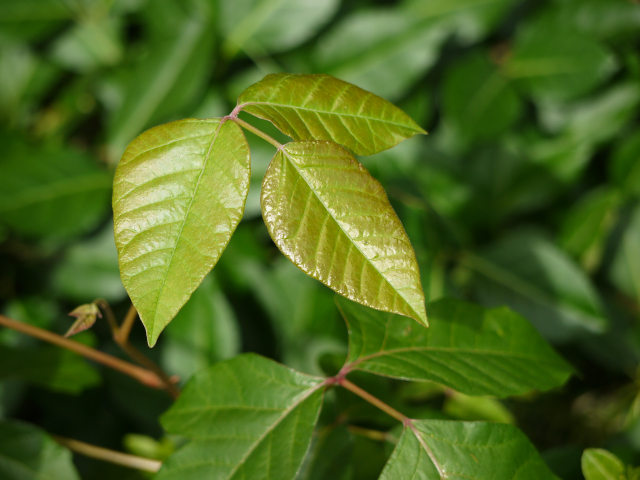
A poison ivy leaf.
Luckily, that familiar rhyme “Leaves of three: let it be” holds true: all of its leaves have three separate leaflets (unless some have been eaten). However, many harmless species also have clusters of three leaflets.
To tell poison ivy apart, look for these features:
- The central leaflet has a longer stalk.
- The edges of the leaflets can be smooth or have a few big jagged “teeth”. Other plants, like some raspberries, may have dozens of small teeth.
- Poison ivy comes in many shades of green, and the leaves can be red when they’re young or during the fall.
The Vines
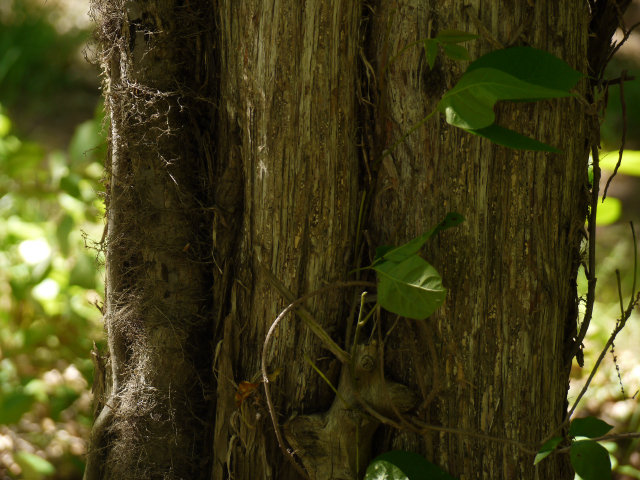
A furry poison ivy vine (at left) climbs a tree.
Even when the leaves die back, the vines can still cause a reaction if touched. Note that poison ivy vines are “hairy”—they’re covered in thin roots that help anchor the plant to the thing it’s climbing. In fact, another one of the many rhymes associated with this plant is “Hairy rope, don’t be a dope.” A few other vines have a hairy appearance, but most of our native vines don’t.
The Berries
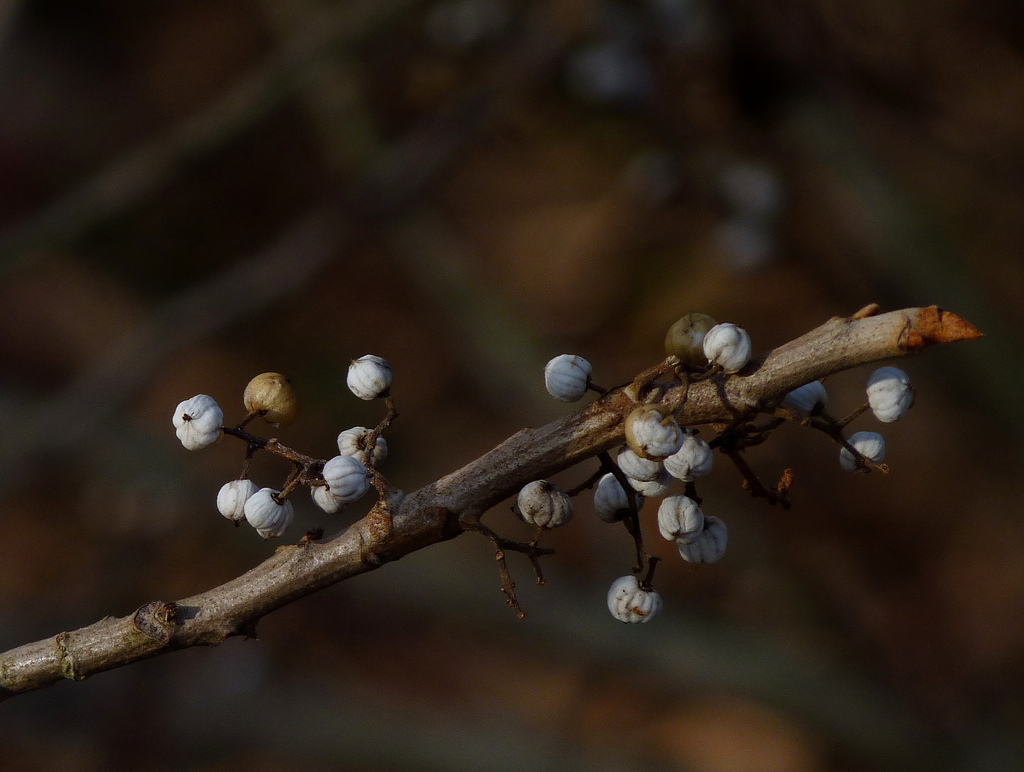
Poison ivy berries. John Beetham, Flickr user Dendroica.
In the summer and fall this plant will grow small clusters of green-white berries. These fruits will often stick around during the winter.
The Softer Side
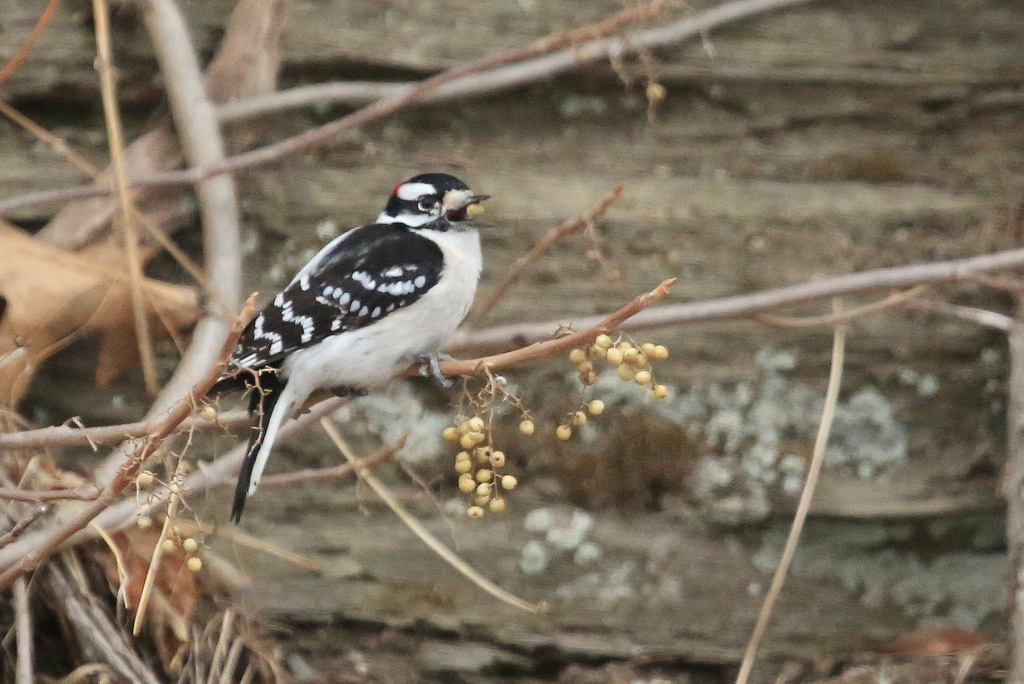
A downy woodpecker eats poison ivy berries. Tim Lenz, Flickr user seabamirum.
Even though poison ivy can be a (literal) pain for humans, it’s a boon for other animals. Some creatures, such as cottontails and deer, eat the leaves. Even the goats that live at some of our wildlife sanctuaries enjoy a meal of poison ivy. Because the berries persist through the winter, they give birds a food source when times are tough. Insects pollinate the flowers and chew on the leaves, too.
Poison ivy also has several plant relatives that people find delicious. It’s a member of the Anacardiaceae family, which is also known as the cashew family and includes pistachios and mangoes. In fact, the shell of cashew contains a chemical similar to the one in poison ivy that causes skin irritation.
What To Do If You Touch It
Some people, such as our property managers, have no choice but to touch the plant. You can read about one property manager’s approach at our Wellfleet Bay Wildlife Sanctuary. Here are some quick tips:
- Wash off the irritating oil as soon as you can. Use soap and water or rubbing alcohol, or try specialty products designed for this purpose.
- Clean all items that have touched the plant, including clothes and shoes. The oil found on poison ivy is very stable and can remain for months, if not years, on anything it touches.
- If you get a rash, remember: it’s not contagious. Any new rashes are probably caused by contact with items that still carry the oil.
Do you have any favorite tips for identifying poison ivy?
